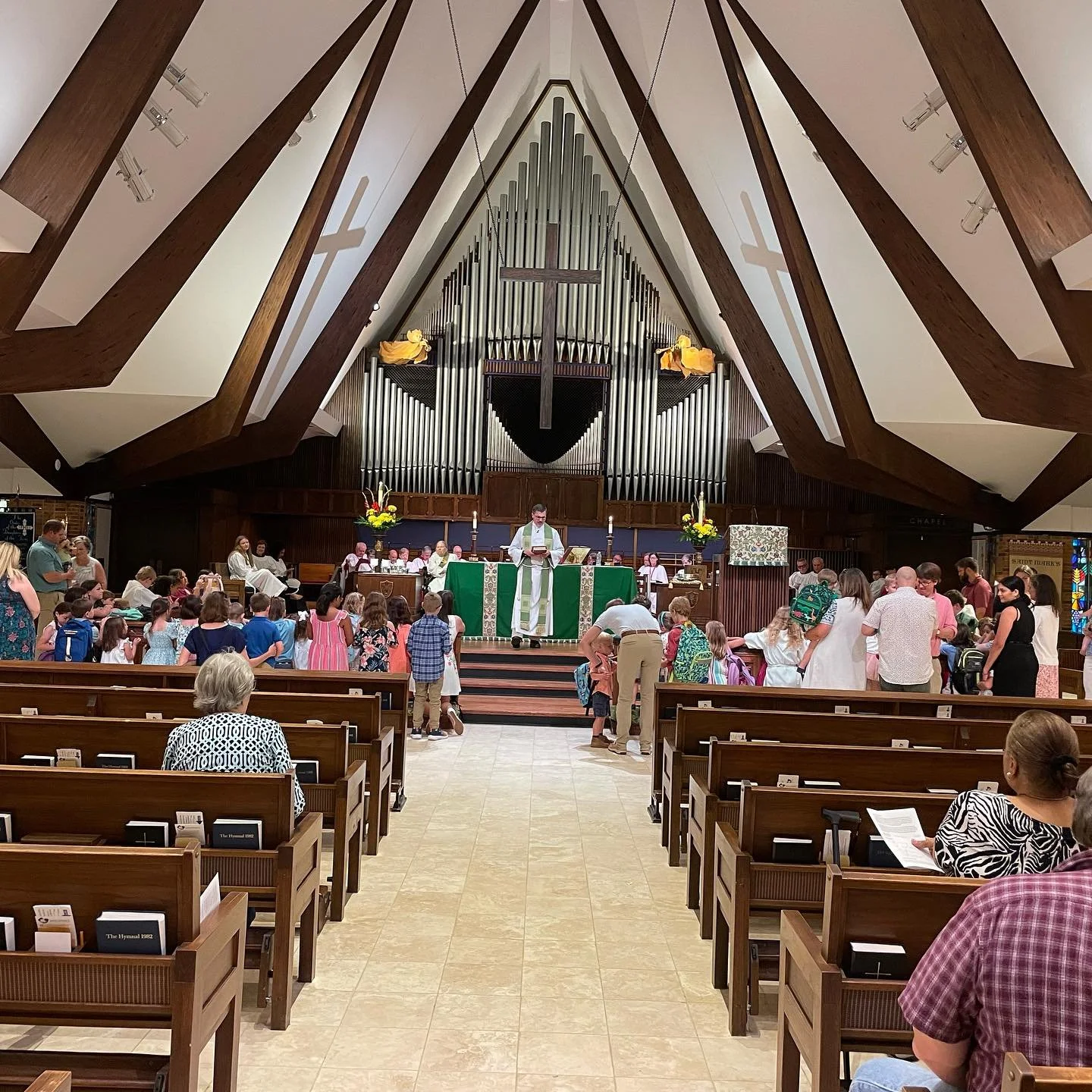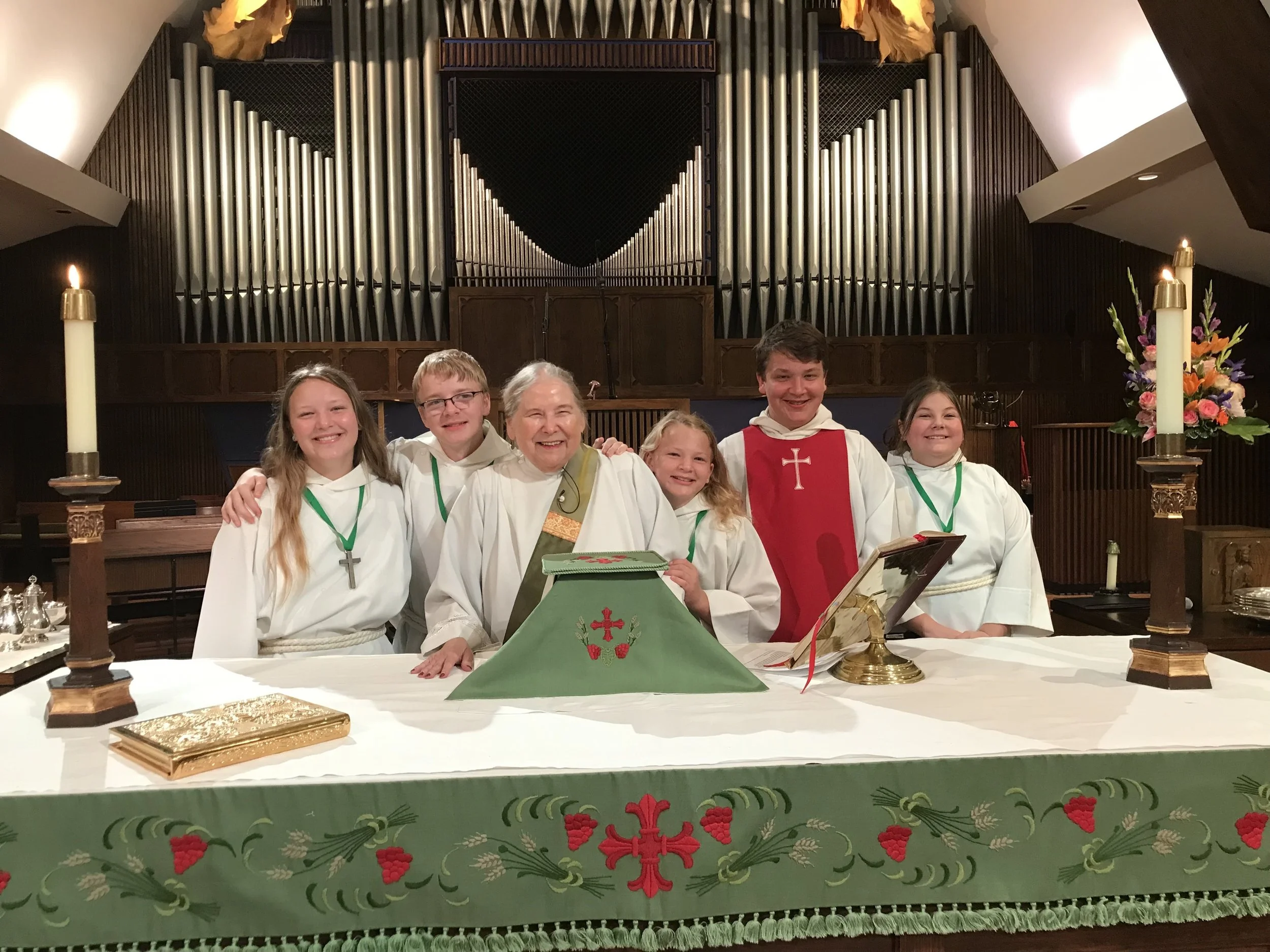Sabbath
“Sabbath-keeping is a resistance movement, and it’s very counter-cultural. Sabbath-keeping is a resistance to the clutter, the noise, the advertising, the busyness, and the ‘virtual living’ that sucks the life out of our lives. Sabbath-keeping is a resistance to constant production, work, and accumulation. It may be the most difficult of the Ten Commandments to keep, and it may also be the most important.”—Br. Curtis Almquist, SSJE, from “Brother, Give Us a Word,” a daily email sent to friends and followers of the Society of Saint John the Evangelist (SSJE.org).
backpack blessing
Keeping the Sabbath in our culture is more than problematic. I have one friend who rests entirely on the Sabbath. She does nothing work-related, trying to spend as much time as possible outdoors. I am reminded of my grandparents, who followed this rule. My grandmother would not even do a little sewing on Sunday. I often spent Sundays with them. We ate, rested, walked around my grandfather’s farm, and attended church. We watched the Ed Sullivan Show at night on television, after making Seven-Up floats. I would then spend the night in their guest double bed, which seemed unbelievably huge. I remember most of all the feeling of love and peace these days. I wonder how much was related to Sabbath-keeping.
They mentored me on how to keep the Sabbath, but I have forgotten. I am an important person. I will never make those deadlines unless I do a little work on Sunday. A little turns into several hours’ worth. Once I start, it is hard to stop. I will rest later.
I want to keep the Sabbath. It is not too late to start. Join me. Let us encourage one another. Maybe we need a Sabbath recovery group to share stories about what happens when we keep the Sabbath.
When I meet with people to offer spiritual direction, I ask them how they keep the Sabbath. I hope to learn from them and remind them of this spiritual gift, the third commandment. It may be the only spiritual gift that is a commandment.
The Ten Commandments honor God, but were also given for our health and safety. Sometimes, viewing them as rules and guides to a healthy life is helpful—more important than diet and exercise.
Sabbath-keeping was even more problematic during this pandemic. Our usual practice to honor God was through a live-streamed service from an empty church, where we no longer could see or feel our community that once surrounded and supported each other. We only saw the faces of our faith community at formation meetings through a computer or phone on Zoom. Our clergy are masked and stay distanced. Our Rally Day and animal blessings were drive-through.
My experience is that our Sabbath-keeping by necessity became more individual rather than community-based. As a result, we spent more time writing, reading, praying, meditating, listening, walking, or talking one-on-one to others. Suppose we can envisage this as a revival of old spiritual practices or starting new practices to spend time with our Creator. In that case, it can become a new adventure that may carry over into life if it ever becomes “normal” again.
However, we must never forget what it was like to worship in person in community and kneel side by side as we receive the Eucharist, for this is where we will more often discern and taste the face of God.
acolytes




